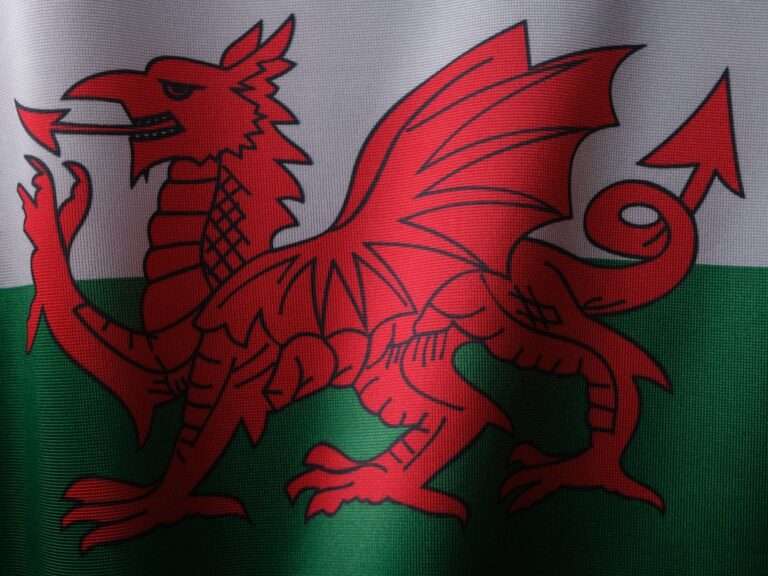The Power of Symbolism: Unraveling the Mysteries of The Wind

Symbolism is a literary device that uses symbols to represent ideas or qualities. It adds depth and layers of meaning to a text, allowing readers to interpret and analyze the work on a deeper level. Symbolism can be found in various forms in literature, such as objects, characters, colors, and even natural elements like the wind.
The wind, in particular, has been a powerful symbol in literature for centuries. It carries with it a sense of mystery and power, and its presence often signifies change, transformation, freedom, and connection. In this article, we will explore the different ways in which the wind is used as a symbol in literature and the significance it holds.
Key Takeaways
- Symbolism plays a significant role in literature.
- The wind is an archetypal symbol that represents change, transformation, freedom, nature’s power, communication, spirituality, time, eternity, death, and rebirth.
- The wind symbolizes change and transformation because it is constantly moving and shifting.
- The wind represents freedom and liberation because it cannot be contained or controlled.
- The wind is a powerful symbol that has enduring impact in literature and life.
The Wind as an Archetypal Symbol
Archetypes are universal symbols or patterns that are present across different cultures and time periods. They tap into the collective unconscious and evoke deep emotions and meanings. The wind is one such archetypal symbol that has been used in literature throughout history.
The wind represents a force that is beyond human control, unpredictable and ever-changing. It can be gentle and soothing or fierce and destructive. This duality makes it a powerful symbol that reflects the complexities of life itself. In literature, the wind often represents the unseen forces at work in the world, the power of nature, and the inevitability of change.
Examples of the wind as an archetypal symbol can be found in works such as William Shakespeare’s “Macbeth,” where the witches’ prophecies are delivered on the wind, foreshadowing the chaos and destruction that will follow. In Emily Bronte’s “Wuthering Heights,” the wind is used to convey the wildness and passion of the characters and their surroundings. These examples demonstrate how the wind as an archetypal symbol adds depth and complexity to the themes and emotions explored in literature.
The Wind as a Symbol of Change and Transformation
The wind is often used as a symbol of change in literature. Its ability to move and shape the environment around it mirrors the transformative nature of life itself. The wind can bring about both positive and negative changes, and its presence often signifies a turning point or a shift in the narrative.
In literature, the wind is often associated with personal growth and transformation. It can represent the protagonist’s journey towards self-discovery or their willingness to embrace change. For example, in F. Scott Fitzgerald’s “The Great Gatsby,” the wind is used to symbolize the changing social landscape of the 1920s and the characters’ desire for a better future.
The wind can also symbolize the passage of time and the inevitability of change. In Gabriel Garcia Marquez’s “One Hundred Years of Solitude,” the wind is a recurring motif that represents the cyclical nature of life and the constant flux of time. It serves as a reminder that nothing remains stagnant and that change is an integral part of existence.
The Wind as a Symbol of Freedom and Liberation
| Symbol | Meaning | Examples |
|---|---|---|
| Wind | Freedom and liberation | Wind blowing through an open field, wind chimes, wind turbines |
| Windsock | Direction and movement | Used in aviation to determine wind direction and speed |
| Kite | Freedom and playfulness | Flying a kite on a windy day |
| Sailboat | Adventure and exploration | Sailing across the ocean with the wind in your sails |
The wind is often associated with freedom and liberation in literature. Its ability to move freely and without constraint represents the desire for independence and escape from oppressive forces. The wind can symbolize breaking free from societal norms, personal limitations, or even emotional constraints.
In literature, characters often find solace and freedom in the wind. It becomes a source of liberation from their current circumstances or a means to escape their troubles. For example, in J.R.R. Tolkien’s “The Lord of the Rings,” the wind carries the eagles, who serve as symbols of freedom and hope, allowing them to rescue Frodo and his companions from danger.
The wind can also represent the freedom of expression and individuality. In Ralph Ellison’s “Invisible Man,” the protagonist feels invisible and trapped by societal expectations. However, when he encounters the wind, he experiences a sense of liberation and self-discovery. The wind becomes a symbol of his newfound freedom and the breaking of societal chains.
The Wind as a Symbol of Nature’s Power and Fury
The wind is often used as a symbol of nature’s power and fury in literature. Its ability to cause destruction and chaos reflects the uncontrollable forces of nature and the insignificance of human existence in the face of such power.
In literature, the wind can be portrayed as a destructive force that wreaks havoc on the environment and disrupts the lives of characters. It can represent the wrath of nature or serve as a warning of impending danger. For example, in William Golding’s “Lord of the Flies,” the wind is used to foreshadow the violent events that will unfold on the island.
On the other hand, the wind can also symbolize the awe-inspiring beauty and majesty of nature. It can evoke a sense of wonder and reverence for the natural world. In Mary Shelley’s “Frankenstein,” the wind is described as a powerful force that fills Victor Frankenstein with a sense of awe and inspiration, reminding him of the wonders of creation.
The Wind as a Symbol of Communication and Connection

The wind is often used as a symbol of communication and connection in literature. Its ability to carry sound and messages across vast distances represents the power of connection between individuals or even between different realms.
In literature, characters often use the wind as a means to communicate with each other or with supernatural beings. It becomes a conduit for messages, secrets, or even divine intervention. For example, in William Shakespeare’s “The Tempest,” Ariel, a spirit, uses the wind to carry out Prospero’s commands and communicate with other characters on the island.
The wind can also symbolize the interconnectedness of all living beings. It serves as a reminder that we are all part of a larger whole and that our actions have consequences that ripple through the world. In Khaled Hosseini’s “The Kite Runner,” the wind is used to symbolize the connection between Amir and Hassan, two childhood friends whose lives are forever intertwined.
The Wind as a Symbol of Spirituality and Mysticism
The wind is often used as a symbol of spirituality and mysticism in literature. Its intangible nature and ability to move unseen represent the presence of higher powers or unseen forces at work in the world.
In literature, the wind can be associated with spiritual enlightenment, divine intervention, or mystical experiences. It becomes a symbol of transcendence and the search for meaning beyond the physical realm. For example, in Hermann Hesse’s “Siddhartha,” the wind is used to symbolize the spiritual journey of the protagonist and his quest for enlightenment.
The wind can also represent the mysterious and unknowable aspects of existence. It serves as a reminder that there are forces at work in the world that are beyond human comprehension. In Emily Dickinson’s poetry, the wind is often portrayed as a mystical force that carries secrets and whispers of hidden truths.
The Wind as a Symbol of Time and Eternity
The wind is often used as a symbol of time and eternity in literature. Its constant movement and ever-changing nature reflect the passage of time and the eternal cycle of life.
In literature, the wind can be associated with the fleeting nature of time and the impermanence of existence. It serves as a reminder that everything is transient and that nothing lasts forever. For example, in William Wordsworth’s poem “Ode: Intimations of Immortality from Recollections of Early Childhood,” the wind is used to symbolize the passing of time and the loss of innocence.
On the other hand, the wind can also represent eternity and the timeless nature of the universe. It serves as a reminder that there are forces at work in the world that are beyond human comprehension. In T.S. Eliot’s “The Waste Land,” the wind is used to symbolize the cyclical nature of life and the eternal struggle between order and chaos.
The Wind as a Symbol of Death and Rebirth
The wind is often used as a symbol of death and rebirth in literature. Its ability to bring about change and transformation reflects the cycle of life, death, and renewal.
In literature, the wind can be associated with the end of life or the passing of a loved one. It serves as a reminder of the impermanence of existence and the inevitability of death. For example, in William Shakespeare’s “Hamlet,” the wind is used to symbolize the impending doom and tragedy that will befall the characters.
On the other hand, the wind can also represent rebirth and renewal. It serves as a reminder that even in the face of death, there is always the possibility of new beginnings. In Margaret Atwood’s “The Handmaid’s Tale,” the wind is used to symbolize hope and resistance in a dystopian society.
The Enduring Impact of Symbolism in Literature and Life
In conclusion, symbolism plays a crucial role in literature by adding depth and layers of meaning to a text. The wind, in particular, has been a powerful symbol throughout history, representing various themes such as change, transformation, freedom, nature’s power, communication, spirituality, time, and death.
The wind as an archetypal symbol taps into the collective unconscious and evokes deep emotions and meanings. It serves as a reminder of the complexities of life and the forces at work in the world that are beyond human control.
The wind’s enduring impact as a symbol in literature reflects its significance in our own lives. It reminds us of the ever-changing nature of existence, the power of connection, and the eternal cycle of life, death, and rebirth. Symbolism, like the wind, continues to shape and enrich our understanding of the world around us.
If you’re interested in exploring more symbolism, you might find the article on “What Does the Moon Symbolize?” intriguing. The moon has long been associated with various meanings and interpretations across different cultures and belief systems. From representing femininity and intuition to symbolizing cycles and transformation, the moon holds a significant place in symbolism. To delve deeper into this topic, check out the article here.
FAQs
What is symbolism?
Symbolism is the use of symbols to represent ideas or qualities.
What is the wind?
The wind is the natural movement of air in the atmosphere, especially in the form of a current of air blowing from a particular direction.
What is the significance of the wind in literature?
The wind is often used as a symbol in literature to represent change, freedom, or a force of nature that cannot be controlled.
What are some examples of the wind as a symbol in literature?
Some examples of the wind as a symbol in literature include the wind in William Shakespeare’s play “King Lear,” which represents chaos and disorder, and the wind in Emily Bronte’s novel “Wuthering Heights,” which represents the wild and untamed nature of the moors.
What is the cultural significance of the wind?
The wind has cultural significance in many cultures, including Native American and Chinese cultures, where it is believed to have spiritual and mystical qualities.
What is the scientific explanation for the wind?
The wind is caused by differences in air pressure in the atmosphere, which create areas of high and low pressure. Air moves from areas of high pressure to areas of low pressure, creating wind currents.





